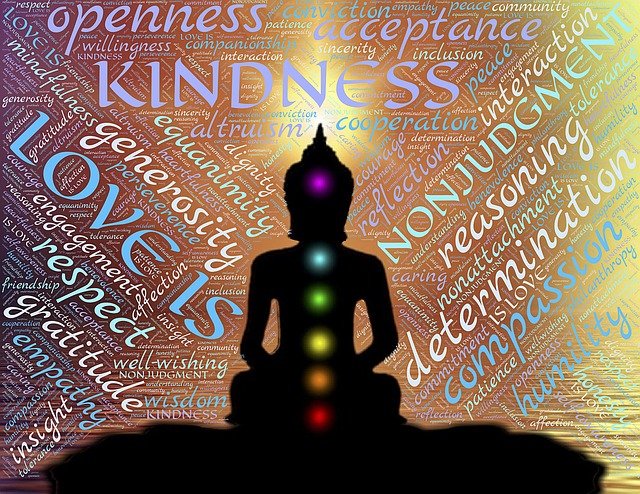How Seasons Can Affect Our Moods and Our Lives
Every year at this time, when the break from summer ends and the school year starts, I feel a shift in both myself and the environment around me. It has been this way since I was a child. There is this anticipation of increased activity and responsibility; an anticipation that traffic will worsen and the workload will intensify, both for adults and children. There is a sense of grief at the close of summer which seems to me to represent an easing of stress. Summer seems to be a time when people are more focused on relaxation and vacation. We generally look forward to these things. Of course, I don’t want to speak for all people, but this is a perception I hear from many. These reactions are pretty typical and eventually most of us make the adjustment and find our groove in the new season. Others are more significantly impacted. There are people who find an increase in symptoms of anxiety and depression at specific times of the year. They often wonder why this is happening. This can happen during transition from any season to another depending on the individual. Each season brings with it it’s own traditions, rituals, and expectations. There are also the observable changes in length of daylight and daily temperatures. There is usually a change in type and level of activity. All of these factors can contribute to what at times might be diagnosed as Season Affective Disorder (SAD).
How Do I Know If I Am Experiencing SAD?
Are you saying to yourself at this point “Hmm, this sounds familiar. But how do I know if I am experiencing SAD? The Mayo Clinic defines SAD as “a type of depression that’s related to changes in seasons — SAD begins and ends at about the same times every year. If you’re like most people with SAD, your symptoms start in the fall and continue into the winter months, sapping your energy and making you feel moody. Less often, SAD causes depression in the spring or early summer.. “ (From: http://www.mayoclinic.org/diseases-conditions/seasonal-affective-disorder/basics/definition/con-20021047). SAD is a subtype of major depression with the difference being that it comes and goes with the change of seasons. Symptoms will include those associated with major depression, but will also have unique features depending on the season that it occurs. Psychology Today describes the symptoms as follows (From: https://www.psychologytoday.com/conditions/seasonal-affective-disorder):
Symptoms of Winter SAD
- Feelings of hopelessness and sadness
- Thoughts of suicide
- Hypersomnia or a tendency to oversleep
- A change in appetite, especially a craving for sweet or starchy foods
- Weight gain
- A heavy feeling in the arms or legs
- A drop in energy level
- Decreased physical activity
- Fatigue
- Difficulty concentrating
- Irritability
- Increased sensitivity to social rejection
- Avoidance of social situations
Symptoms of summer SAD
- Poor appetite
- Weight loss
- Insomnia
- Agitation and anxiety
How Do I Know if I Need to See a Counselor?
Someone might want to consider seeing a counselor if they find that they are experiencing several of the symptoms listed here and if the symptoms are causing disruptions in their day to day living. Someone would definitely want to see a counselor if they are experiencing the more serious symptoms of suicidal thoughts or a harm to oneself.
What Can I expect from Counseling?
Your counselor will want to ask questions about your symptoms that identify any specific patterns during the year and the severity of these symptoms. In addition, they might ask you to complete a SAD questionnaire that focuses on these patterns. Your counselor is likely to help you recognize how you individually experience SAD as each person is unique in this. One might be formally or informally diagnosed with SAD. There are times when a person recognizes a pattern during the year, but that although challenging, is not significantly disruptive or cause for worry about safety. Others may experience more significantly distressing symptoms. In either case, your counselor will help you identify strategies to help you cope with, alleviate and minimize this experience. This process provides individuals the opportunity to increase self-awareness and thus, in time, be able to anticipate and be proactive ahead of the seasonal change. Many people find that once they understand what is happening and learn strategies to address it, they have a reduced experience of symptoms in the future.
What Are Helpful Strategies to Reduce and Alleviate SAD?
Light therapy is a typical treatment option. People can be prescribed and purchase special lamps to use in their homes and workplaces. Additionally, supplements and /or natural sources of Vitamin D may be recommended Your counselor might suggest seeing a doctor if medication is recommended. In combination with these are many simple lifestyle adjustments. These might include assessing exercise, diet, and sleep. They might also include exploring activities and methods of coping with stress as well as relationships and supports you have. Overall, the idea is to work with you to develop a personalized plan that addresses all possible options. It might take some experimentation to see what works, but eventually one can find a plan that really works.
Do you find that your mood starts to change once the days start getting shorter? Are you looking for a way to understand your experience? Would you like to learn how to better understand these changes and manage them more to your satisfaction? If you find that you relate to SAD in some way and would like some help, the counselors at the Center for Pastoral Counseling of Virginia are available and happy to help. Feel free to visit our webpage, www.pastoralcounseling.com, and get to know our counselors.
Request an Appointment
Individiual, Couples, Pre-Marital, Family,
Children's Counseling and Clergy Assessement
Was It Helpful To You?





